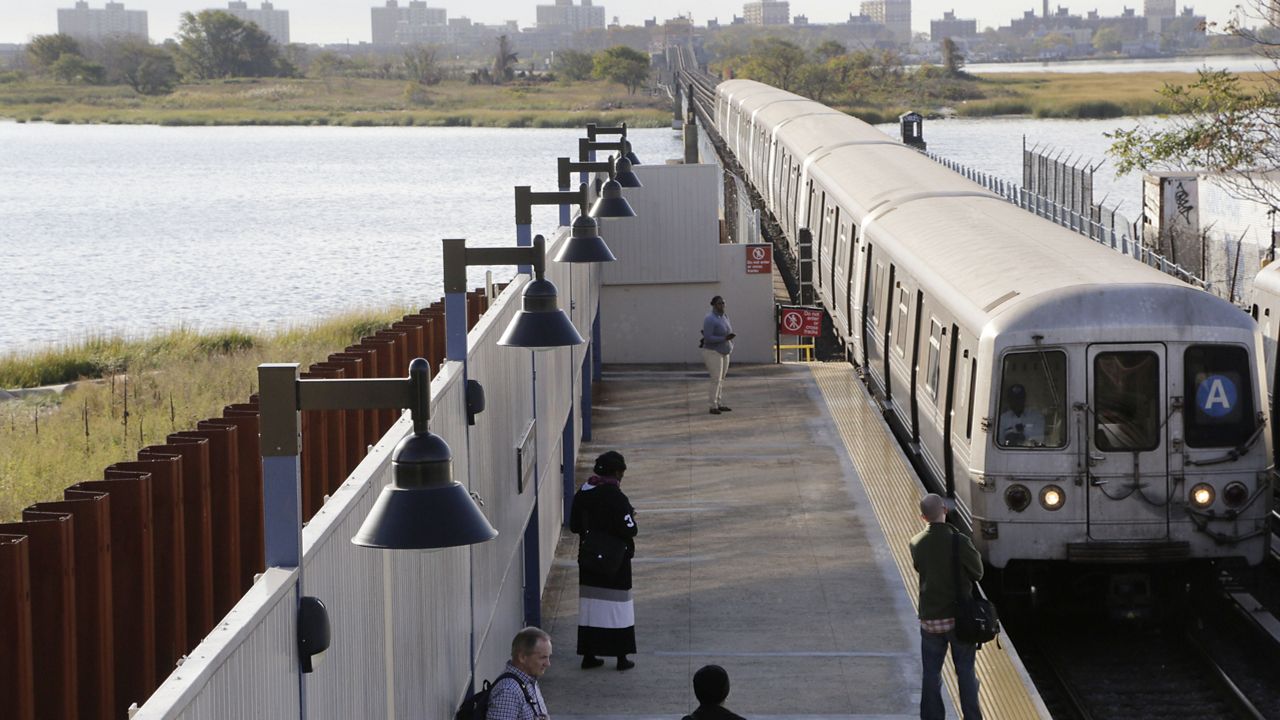Starting in mid-January, the MTA will suspend A train service to the Rockaways for a little over four months, disrupting commutes for thousands of riders who depend on the subway line.
The MTA says it will be making critical infrastructure repairs to the aging line, fortifying it against climate change and future storms. The transit agency will offer commuters alternative ways to get from one place to another in the meantime.
Here’s what you need to know about the shutdown before it takes effect.
When and where is the shutdown happening?
The shutdown will begin on Friday, Jan. 17 and last until Monday, May 19, according to the MTA. Trains on the A line will not run between Howard Beach-JFK Airport and Far Rockaway-Mott Avenue or Rockaway Park-Beach 116th Street.
The Rockaway Park Shuttle, meanwhile, will not run to or from Broad Channel.
Why is it happening?
The Rockaway Line, parts of which are more than 65 years old, was severely damaged after Superstorm Sandy pummeled the area more than a decade ago, according to the MTA.
“Emergency repairs restored service seven months after the storm,” the MTA said in a release. “However, the viaducts and bridge that carry trains across Broad Channel need major upgrades to help protect the line from future storms and ensure reliable service for its over 9,000 daily riders.”
What kind of support is the MTA offering riders?
Straphangers will have a variety of service alternatives offered to them while construction is underway.
Those alternatives include free shuttle buses, discounts on Long Island Rail Road fares at the LIRR’s Far Rockaway Station, and a free shuttle train extended to serve all stations on the peninsula between Far Rockaway and Rockaway Park, Gov. Kathy Hochul said in a release.
Rockaway residents will be able to ride the LIRR from Far Rockaway for $2.75 each way, instead of having to pay the standard $7 fare, though commuters will have to purchase their round-trip tickets at the Far Rockaway Station to get discounted tickets.
Tell me more about the service changes and alternatives
Here’s a more detailed, stop-by-stop breakdown of what the shutdown will look like for commuters, according to the MTA.
During the first weekend of service changes, from the night of Friday, Jan. 17 to the morning of Monday, Jan. 20:
- A trains will not run between Howard Beach-JFK Airport and Far Rockaway-Mott Avenue.
- Rockaway Park Shuttle trains will not run either.
- For service to and from the affected stations, riders will be able to take free shuttle buses, which will run on three routes:
- Nonstop between Howard Beach-JFK Airport and Far Rockaway-Mott Avenue
- Between Howard Beach-JFK Airport and Far Rockaway-Mott Avenue, making all A stops
- Between Howard Beach-JFK Airport, Broad Channel, and Rockaway Park-Beach 116th Street, making all Rockaway Park Shuttle stops
- A trains will run between Inwood-207th Street and Ozone Park-Lefferts Boulevard or Howard Beach-JFK Airport.
Between Monday, Jan. 20 and Monday, May 19, meanwhile:
- A trains will not run between Howard Beach-JFK Airport and Far Rockaway-Mott Avenue or Rockaway Park-Beach 116th Street.
- Rockaway Park Shuttle trains will not run to or from Broad Channel.
- For service between Howard Beach-JFK Airport, Broad Channel, and the Rockaway Peninsula, riders will be able to take free shuttle buses, which will run on two routes:
- Q97, nonstop between Howard Beach-JFK Airport and Far Rockaway-Mott Avenue
- Q109, between Howard Beach-JFK Airport and Beach 67th Street, stopping at Broad Channel and Beach 90th Street
- A trains will be running between Inwood-207th Street and Ozone Park-Lefferts Boulevard or Howard Beach-JFK Airport.
- Rockaway Park Shuttle trains will run between Rockaway Park-Beach 116th Street and Far Rockaway-Mott Avenue.
Who’s been appointed to lead the project?
After spending the summer navigating service and customer communications during the partial G train shutdown, MTA leaders are tapping Hugo Zamora once again.
Zamora, a general superintendent for the MTA, “will monitor deployment of shuttle buses and make real-time service adjustments to accommodate customer demand,” Hochul said in her release.
“He will also oversee communicating service changes to customers, including deploying customer service staff to needed areas and ensuring clear signage is maintained at affected areas,” the release added.



